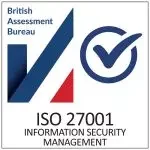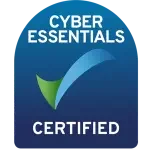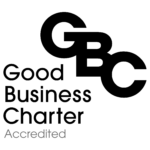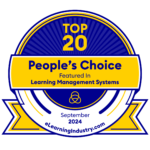
We are excited to share this week’s Thought Leadership blog about the SPHR Exam from a guest blogger, Adobe’s Talent Development Partner Katrina Marie Baker. Enjoy!
Some people set nice, normal New Year’s resolutions for themselves – losing weight maybe, or cutting their daily gallon of coffee to a more socially acceptable amount. Or maybe self-care – taking Sundays off for instance.
Such ordinary things are not for me…
IN THIS ARTICLE...
Studying for SPHR Exam
For my 2020 resolution, I decided to do something considerably less beneficial to my health. I decided that I would take my SPHR exam, and I gave myself three weeks to study for it.
In case you aren’t familiar with the SPHR exam, it’s three hours long, 150 questions, and covers a variety of employment law, policy, and strategic topics relevant to senior HR professionals.
SPHR Exam in just 3 Weeks
My colleagues had mixed reactions to my goal – usually somewhere between horror, surprise, and laughter. Most people study for the SPHR over a period of months due to the amount of memorization required.
I chose not to study for months because:
- I thought my background as a learning professional would make it possible for me to come up with a short yet effective study plan, and
- When it comes to memorizing stuff, I have the attention span of a flea.
Pass With Flying Colours
For a moment, let’s jump forward to the end of the story. My three-week SPHR study plan did actually work. I not only passed my SPHR exam – I did very well. And I firmly believe that this is less a reflection on my personal abilities, and more a reflection on why certain widely accepted learning principles are, well, widely accepted.
Key Concept to Passing Exams
I would like to share with you a key concept that helped me pass a three-hour exam in three weeks. In order to remember complex information, we need the freedom to fail.
I’ve managed to sneak this concept into most of my webinars for learning professionals because I think mistakes are powerfully important to learning. Have you ever watched someone try to do a task while they are petrified of failing at it? It’s painful – for the person and for everyone watching.
Making Mistakes to Get It Right
Sometimes we want so badly to be good, that we focus all of our energy on avoiding the bad. And because we avoid the bad, it chases us. We try so hard to be right that we spend tons of time identifying every possible thing that could go wrong.
The only way to anticipate what might go wrong is to make a lot of mistakes. To start, we need to practice new skills. But more than that, we need to practice failing – until we feel good about it.
Why I Didn’t Read Text Books
While studying for the SPHR exam, I spent relatively little time reading textbooks and study packets. Instead, I spent the majority of my time answering every practice question I could find.
And in the beginning, I got most of the questions wrong. Did that feel good? No. But it didn’t matter. There weren’t any negative consequences. No one was standing in my apartment, watching me fail.
After some time, I started to feel rebellious about it. I would pour a glass of wine at night, whip out the practice questions, and cackle to myself.
“Watch this. I’m going to get this wrong. Muhahahaha!”
It no longer mattered to me whether my responses were correct. And after I got over myself, making mistakes opened my curiosity. I wanted to know why I was wrong – what detail I had missed.
So I read every bit of feedback. Mistakes drove progress. And in time, my practice exam scores improved… I was failing forward.
Timed Practice Exams for SPHR
As a result, my confidence began to increase. Two weeks prior to taking the SPHR exam, I began giving myself timed practice exams. Why? Because knowing the material is only half the battle sometimes. Learning to pass an assessment requires its own study plan.
When we practice completing an exam, we condition ourselves so that the assessment format isn’t a distraction. When it comes time for the actual exam, we stay calm and composed, and we focus on applying knowledge rather than concentrating on the logistics of doing so.
Emulating the Exam Environment
Most of us are not used to taking tests, so we expend precious brain power figuring out the peripheral details – including the physical space where the assessment takes place. While taking timed practice exams at home, I tried to mimic the environment of the test center.
I called the test center and asked what the room would be like. Yes, really. I sat in an office chair at a desk, used earplugs, and adjusted the room temperature so it was cold like the test center tended to be.
I started taking practice exams at the same time of morning that I expected to take the real exam, ate the same granola bar before each attempt, and drank the same amount of caffeine. By the time I got to the real exam, I felt like I had already taken the test several times. There was no nervousness and nothing to distract me.
Enjoying the SPHR Exam Process
In the end, all of these slightly ridiculous lengths paid off. I actually enjoyed the SPHR exam. Rather than feeling stressed, I was able to view the experience as a chance to challenge myself. Instead of seeing each question as a possibility of failure, I saw them as puzzles.
How Can We Change From This Experience?
So here is my question to you, from one learning professional to another. How do we provide learners with an environment where there is nothing to distract them? How do we give them a feeling of safety, so they can fully explore right and wrong? And even more broadly, what can we do within our organizations to make failure normal and healthy, so it can propel us to greater successes?
Katrina Marie Baker
Talent Development Partner – Adobe.
Intellek (formerly TutorPro) is a founding member of the learning technology industry. With a presence in the USA, UK, Canada, and the EU – for over 30 years we have pioneered the development of cutting-edge eLearning software and online training solutions, with a large and diverse portfolio of international clientele.
Disclaimer: We use all the tools available including generative AI to create relevant and engaging content.





